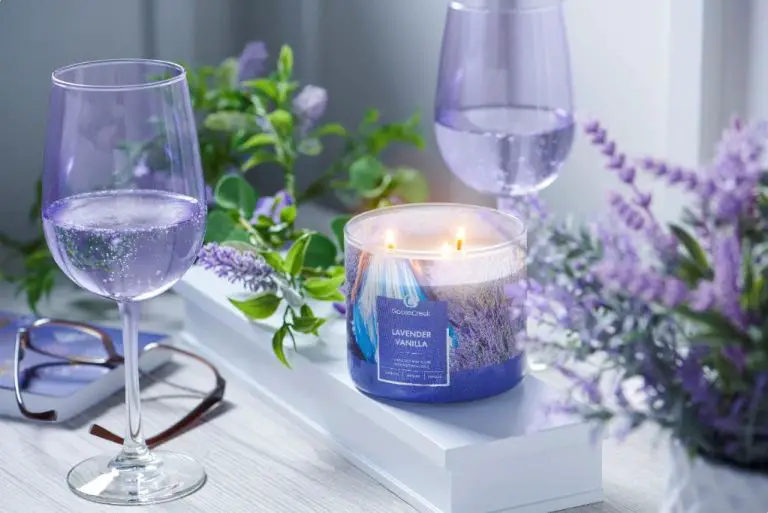Do Scented Candles Help You Relax?
Do Scented Candles Help You Relax?
The soft, flickering glow of a scented candle can instantly create a soothing ambiance. As the fragrant smell wafts through the air, you may feel your stress and anxiety melt away. But is this relaxing effect simply psychological or is there real science behind it?
In this article, we’ll explore the evidence behind scented candles and relaxation. You’ll learn how candles can aid relaxation through aromatherapy, discover the best candle scents for unwinding, and get tips on safely using candles to create a tranquil home environment. We’ll also cover other relaxing home scents and complementary methods for reducing stress.
The Science Behind Aromatherapy
The scientific reasoning behind how scented candles can promote relaxation lies in the close connection between your sense of smell and the areas of the brain associated with emotions, mood, stress and memory. Aromatherapy takes advantage of this mind-body pathway.
When you inhale the fragrant compounds of scented candles, volatile molecules travel up your nose to a part of your nasal cavity called the olfactory bulb where smell receptors are located. From here, signals are sent along the olfactory nerve to the limbic system – sometimes called the emotional brain.
The limbic system houses critical areas like the amygdala and hippocampus that control emotions, behavior, motivation, autonomic nervous system and long term memory. Because scent signals go directly here, smell is considered the sense most closely linked to memory and emotion. This is why certain scents can instantly trigger feelings related to past experiences.
Studies have shown smelling pleasant fragrances from essential oils can shift mood from stressed to relaxed by lowering blood pressure, heart rate and cortisol – the stress hormone. Research also points to activation of olfactory pathways suppressing activity in the sympathetic nervous system, responsible for ‘fight or flight’ stress responses.
Overall the science indicates aromatherapy’s effectiveness for relaxation is tied to the fragrance of scented candles stimulating olfactory pathways that calm emotional centers in the brain and downregulate the body’s physiological stress responses.
Top Scents for Relaxation
When choosing a scented candle for relaxation, some of the most popular and effective scents include:
Lavender – This floral scent has long been used in aromatherapy for its calming and stress-relieving properties. Studies show that lavender can lower heart rate and blood pressure. The soothing lavender aroma induces feelings of tranquility.
Vanilla – Known for being warm, comforting, and nostalgic, vanilla is excellent for relaxation. Its sweet fragrance can relieve anxiety and create a sense of contentment.
Jasmine – This intoxicating floral has an uplifting yet calming effect. Jasmine essential oil has been shown to reduce depression and promote tranquility.
Ylang Ylang – With its floral and slightly fruity aroma, this essential oil can lower blood pressure and breathing rate, promoting deep relaxation.
Bergamot – This citrusy scent helps alleviate stress and anxiety. Bergamot can improve mood while having a tranquilizing effect.
These aromas, along with other relaxing scents like chamomile, rose, and sandalwood, work by triggering the limbic system. This influences physical, cognitive, and emotional responses, lowering stress to create a deep sense of calm.
How to Use Scented Candles for Relaxation
Here are some tips for using scented candles to promote relaxation and tranquility:
Choose a scent like lavender, chamomile, or sandalwood that is known for its calming properties. The scent compounds in these candles can trigger your brain to release neurotransmitters associated with relaxation.
Place the candle in your bedroom, living room, or any other area where you want to unwind. Make sure to put it on a stable, heat-safe surface away from anything flammable.
Light the candle during times of day when you want to relax, like in the evening after work. The soft glow and aroma can set the mood for rest and recharging.
Sit near the candle as it diffuses its scent throughout the room. Focus on taking slow, deep breaths to inhale the aroma therapeutically.
You can combine candle use with other relaxing activities like gentle yoga, listening to calming music, meditation, or reading a book. This enhances the tranquil ambiance.
Burn the candle for 1-2 hours for maximum benefit. Safely extinguish the flame if leaving the room or before going to sleep.
Consider using candle warmers instead of lighting the wick. This eliminates the fire hazard while still spreading the soothing scent.
Changing up your scents from time to time prevents olfactory fatigue. Rotate between a few favorite relaxing candles.
Other Relaxing Home Scents
In addition to scented candles, there are other options for filling your home with relaxing fragrances. Two popular alternatives are essential oil diffusers and potpourri or reed diffusers.
Essential oil diffusers allow you to customize your relaxing scents by choosing your preferred essential oils. The diffuser then gently releases the aroma of the oils into the air. Diffusers also don’t have an open flame like candles. However, the scent may not be quite as strong or last as long as a scented candle.
Potpourri and reed diffusers can provide gentle background scents throughout the home without the need to burn a candle. Reed diffusers in particular offer elegantly simple aroma distribution through natural rattan or bamboo reeds. However, the fragrance oils used in potpourri and diffusers may contain synthetic ingredients, unlike the essential oils used in many candles and diffusers.
Compared to these alternatives, scented candles can provide stronger, richer fragrance with the visual beauty and flickering ambience of an open flame. However, they require more care and attentiveness to burn safely. Ultimately, choosing among candles, essential oil diffusers, potpourri, and reed diffusers comes down to personal preference and lifestyle factors.
Safety Tips
When using scented candles to relax, there are some key safety tips to keep in mind. First, always make sure to blow out your candle before leaving the room or going to sleep. Lit candles should never be left unattended. It’s also important to place your lit candle on a stable, nonflammable surface away from drafts. This helps prevent the candle from getting knocked over accidentally.
Additionally, take care if you have children or pets around lit candles. Supervise them closely and keep candles out of their reach. Consider using flameless candles if you have curious little ones. Overall, just use good judgment and remain attentive when burning candles. Taking basic safety precautions will allow you to enjoy your scented candles safely.
When Candles May Not Help
While scented candles can be beneficial for many people looking to relax, they may cause issues for some individuals. Those with allergies or sensitivities to scents, for example, may find that certain candle aromas trigger allergy symptoms or headaches. The strong fragrances given off by candles could also worsen respiratory issues like asthma.
People who suffer from migraines may also want to avoid scented candles, as the scents can serve as migraine triggers. The flickering light of candle flames can potentially trigger migraines as well.
Those with anxiety disorders may find that strong candle scents make their anxiety worse rather than helping them relax. For some, scents associated with past memories or experiences can actually provoke feelings of stress and anxiety. Sitting in a room full of candle aromas could feel overwhelming.
In general, anyone who finds scented candles to be more distracting or stressful than relaxing should avoid using them as a relaxation method. There are many other options like meditation, deep breathing exercises, yoga, and more that can help induce relaxation without the use of scents.
Complementary Relaxation Methods
In addition to using scented candles, there are other relaxation techniques that can help reduce stress and tension:
Yoga and Meditation
Yoga and meditation are time-tested relaxation practices. Yoga combines physical postures, breathing exercises and meditation to relieve stress. Meditation involves focusing your attention to calm the mind.
Massage
Massage therapy applies pressure and movement to muscles and joints of the body to relieve tension. Massage has been shown to reduce cortisol levels and heart rate.
Music Therapy
Listening to soothing music can lower blood pressure, heart rate and anxiety. Creating music by singing or playing an instrument can also induce a relaxed state.
Mindfulness
Mindfulness techniques involve being present in the moment to gain clarity and perspective. Activities like mindful breathing and walking can alleviate stress.
Using scented candles along with complementary relaxation methods can provide greater stress relief than candles alone.
Summary
In summary, scented candles can be an effective way to promote relaxation through aromatherapy. The scents from candles enter the nose and stimulate the olfactory nerves, which send signals to the limbic system, the part of the brain that controls emotions and behavior. When certain scents are detected, they can activate the parasympathetic nervous system and induce a state of calm. The top scents for relaxation include lavender, chamomile, jasmine, and vanilla. Using scented candles as part of a bedtime routine, during meditation, or simply when you want to unwind after a stressful day can help promote overall wellbeing.
To get the most benefit when using scented candles for relaxation, pay attention to the scent and how it makes you feel. Take deep breaths to fully experience the aroma. Consider combining candles with other relaxing elements like soft music, gentle lighting, yoga, or a warm bath. Be sure to take safety precautions like keeping candles away from drafts and flammable materials. While scented candles can be helpful for many, results may vary based on the individual and other factors.
In conclusion, incorporating scented candles into periods of relaxation can be an easy yet effective way to help calm the mind and body. Approach candle use with intention and find the scents that work best for you. Aromatherapy candles are just one piece in the puzzle of self-care routines that promote overall wellness.
Sources
American Psychological Association. (2020). Publication manual of the American Psychological Association (7th ed.). https://doi.org/10.1037/0000165-000
Herz, R. S. (2009). Aromatherapy facts and fictions: A scientific analysis of olfactory effects on mood, physiology and behavior. International Journal of Neuroscience, 119(2), 263–290. https://doi.org/10.1080/00207450802333953
Hongratanaworakit, T. (2011). Relaxing effect of rose oil on humans. Natural Product Communications, 6(2), 291-296. https://doi.org/10.1177/1934578X1100600223
Hur, M. H., Song, J. A., Lee, J., & Lee, M. S. (2014). Aromatherapy for stress reduction in healthy adults: A systematic review and meta-analysis of randomized clinical trials. Maturitas, 79(4), 362–369. https://doi.org/10.1016/j.maturitas.2014.08.006
National Candle Association. (2013). Candle safety tips. https://www.candles.org/candle-safety/





